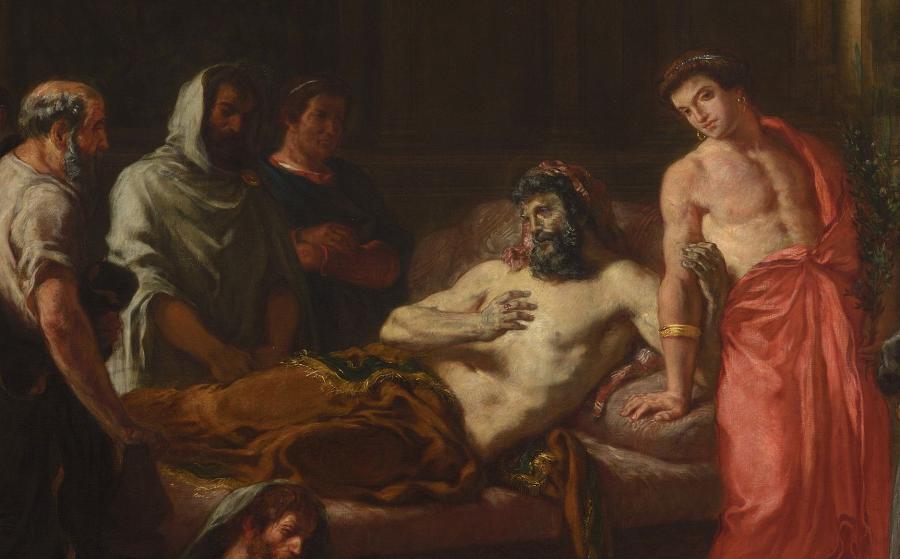Last words of the Emperor Marcus Aurelius
Information sur l’artiste
Eugène Delacroix [Charenton-Saint-Maurice, 1798 - Paris, 1863]

Dernières paroles de l'empereur Marc-Aurèle, 1844.
Image © Lyon MBA - Photo Alain Basset
At the centre of this large composition, an ailing old man grips the arm of a young one. His son is dressed in red and has an insolent bearing and haughty expression. The atmosphere is heavy. Around them, men who appear sombre and sad encircle the space, compassionate witnesses to this confrontation.
Although Eugène Delacroix was a leading figure of Romanticism in painting, he chooses a Classical subject for this painting, depicting the final hours of the life of Roman Emperor Marcus Aurelius. He bases his composition on a deathbed scene, a type established by Nicolas Poussin and later Jacques Louis David, thus following in the great tradition of history painters.
The scene portrayed here enhances the end of the Roman Empire: Commodus, a hedonist who scorned his father's philosophical approach, would become a tyrannical emperor, causing the power of Rome to dwindle. There is, however, nothing moralistic about this work: despite appearances, it is filled with ambiguity. Is it not the young man with his brightly-coloured robe who brings life and movement to the scene, while the old philosophers are left in the shadows? The unrestrained artistry of the composition reveals the incredible skill in Delacroix’s colour work.
Exhibited at the Paris Salon of 1845, the artwork received a somewhat frosty reception from critics, apart from Charles Baudelaire who praised it as "a glorious painting, magnificent, sublime, misunderstood. […] This colour work is of incomparable skill."
1844
Oil on canvas
H. 260.6; L. 336.3 cm
Received from the French government in 1860; long term loan from the Centre national des arts plastiques
Inv. A 2928





